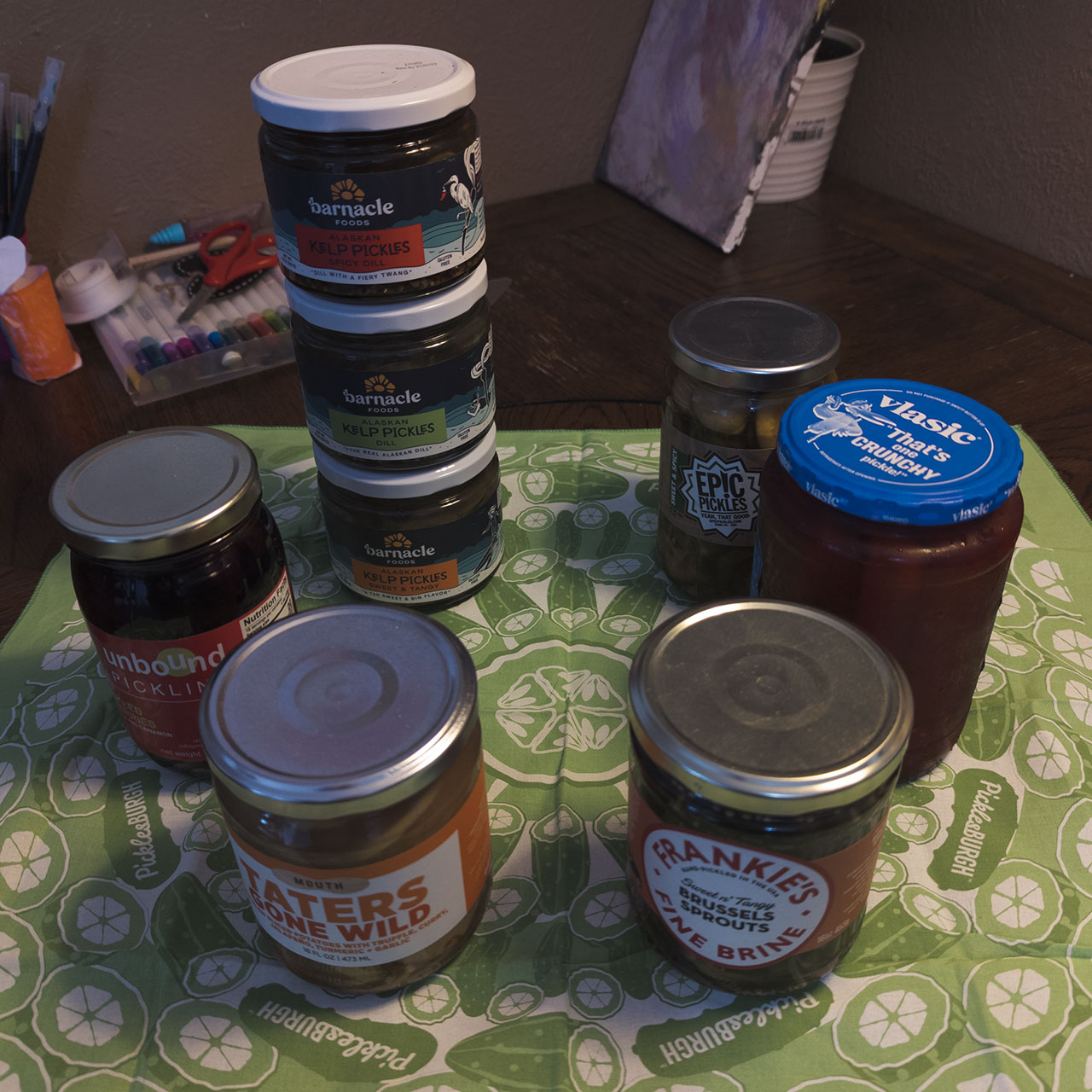
Pickle Me This
everything you need to know about pickles
When you think about pickles you are probably thinking about the dill pickle spear wrapped up alongside your sandwich, the bread-and-butter slices sitting on top of your burger, the neon green relish slathered onto your Chicago-style hot dog, or even the pickled red onion sprinkled on your taco.
But those are just the ones floating at the top of the pickle barrel. Pickles can sweet, savory, spicy, or sour or any combo thererof. They can be made from almost anything – fruit, vegetables, seafood and meat can all be pickled.
Pickling is thousands of years old. Before the advent of refrigeration and canning, it was one of the primary ways the cultures of the world preserved their food, because it can be done in any climate and environment without having to cook.
At its heart, pickling is the process of preserving foods in an anaerobic state to extend its edible longevity by storing it in an highly acidic solution (typically vinegar) with a pH of 4.6 or lower; usually salt or sugar are added to the solution as well. The combination prevents bacteria and microbes from growing, draws out the moisture inside food, and replaces it with enzymes that help preserve it.
If the substance being pickled is already full of liquid – like, say, cabbage or onion – it can be pickled with salt alone. (Kimchi is a good example.) Herbs and spices with anti-microbial properties may also be added to pickles to add flavor and further prevent bacterial growth (mustard seeds and garlic are the most common).
There are four basic types of pickle: quick, salt-brined, vinegar-brined and fermented. Each pickling method has its own benefits, and some items are better suited to one method or another.
Quick pickling is usually used for items that are meant to be consumed almost immediately. Quick pickles are sometimes called “refrigerator pickles” because they need to be stored in a cool environment unlike other forms of pickle which are shelf-stable at room temperature. To create them, food is immersed in a heated solution of water, vinegar, and spices. Quick pickled radishes and onions can be used to add a bright note to salads, sandwiches, and other dishes.
Salt-brined pickles are made by immersing food into a saltwater brine. This creates a probiotic lactic fermentation, and replaces the fluids in an item with microbes that help preserve it. Sauerkraut is a type of salt-brined pickle.
Vinegar pickles are what we traditionally think of when we think of pickles here in America. Food items are added to a briny mixture of vinegar, water, salt, and sometimes sugar or spice that has been heated. The acidity of the solution kills the bad microbes and bacteria and extends its shelf life.
Fermented pickles are made by chopping food and placing it into a vessel, where it is barely covered with a light salty brine. Over time lactic bacteria develops and turns the sugars in the food into lactic acid and other nutritious compounds. Fermented pickles often have a funky, sour taste which can be quite appealing to some.
Once created, vinegar pickles must be stored in glass or stoneware containers; the acidic solution would start to dissolve almost any other container they could be put in.
Pickles are typically eaten raw, as a side dish or condiment. To keep them extra crisp some manufacturers add alum (which allows pectins to bond between cells). Others add sea salt or give the pickles a quick dip in pickling lime, which bolsters cell walls with an infusion of magnesium and calcium.
Almost every sort of food can be picked. Vegetables and fruit are the most common type of pickles, but meat, seafood, and fish can all be pickled too. There are pickled cucumbers and pickled cabbage and pickled potatoes; pickled lemons, pickled peaches, and pickled apples; pickled shrimp, pickled beef and pickled eggs. As for pork products – heck, pretty much every part of the pig can be pickled, from the lips to the tail. After all, waste not, want not.
(It’s worth noting that fresh meat can’t be pickled – it’ll just start to rot and the pickles will make you very, very sick. It has to be cooked first to help break down some of the meat’s internal structure)
There you go. There’s everything you need to know about pickles.
Actually scratch that. There’s only one thing you really need to know about pickles – they’re delicious.
That’s it for the infodump, initiates. As for the rest of this episode… well, odds are you’ve listened to previous episodes where we subjected our niece, #6, to various taste tests of peanut butter, jams, and jellies. When we asked her what food she wanted to do next, she said pickles. So we threw her a little pickle party where we fed her various strange and unusual pickles. We recorded it, but as usual I’m not even going to try and transcribe the audio so you’ll just have to listen to it to find out what happened. Needless to say, though, it involved tasting all sorts of weird and wonderful pickles from Barnacle Foods and Mouth. (And no, this isn’t paid promotion, we just like their stuff.)

Connections
Pickles and peanut butter is a taste combination that can’t be beat — and yes, we have tried it (“Crunchy or Wrong”).
Supplementary Material
Sources
- Alberts, Robert C. The Good Provider: H.J. Heinz and His 57 Varieties. Boston: Houghton Mifflin, 1973.
- McGee, Harold. On Food and Cooking: The Science and Lore of the Kitchen. New York: Scribner, 2004.
- Montagné, Prosper. Larousse Gastronomique. New York: Crown Publishers, 1961.
- Shepherd, Sue. Pickled, Potted, and Canned: How the Art and Science of Food Preserving Changed the World. New York: Simon & Schuster, 2000.
Links
Categories
Tags
Published
First Published:
Last Edited:


